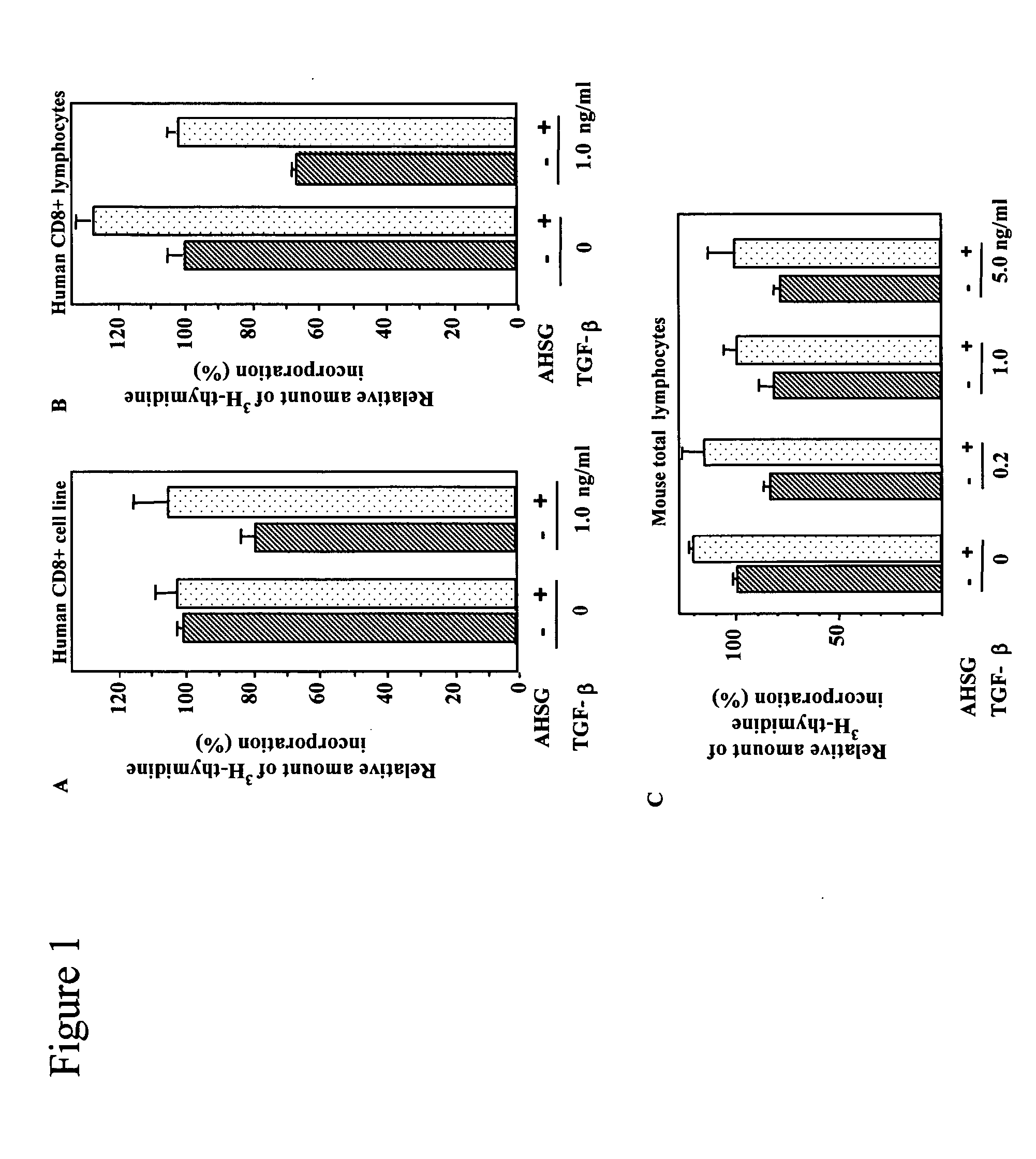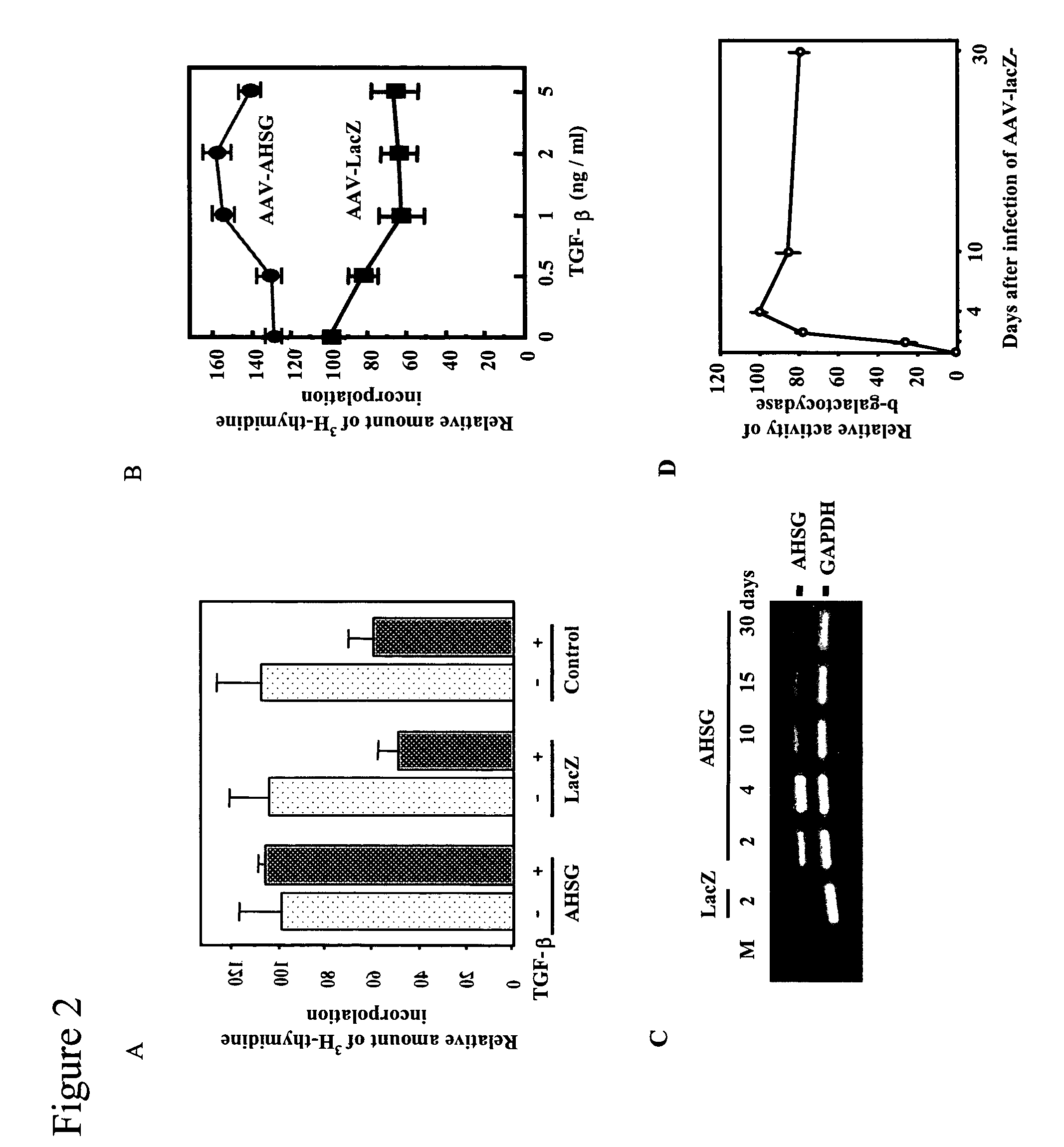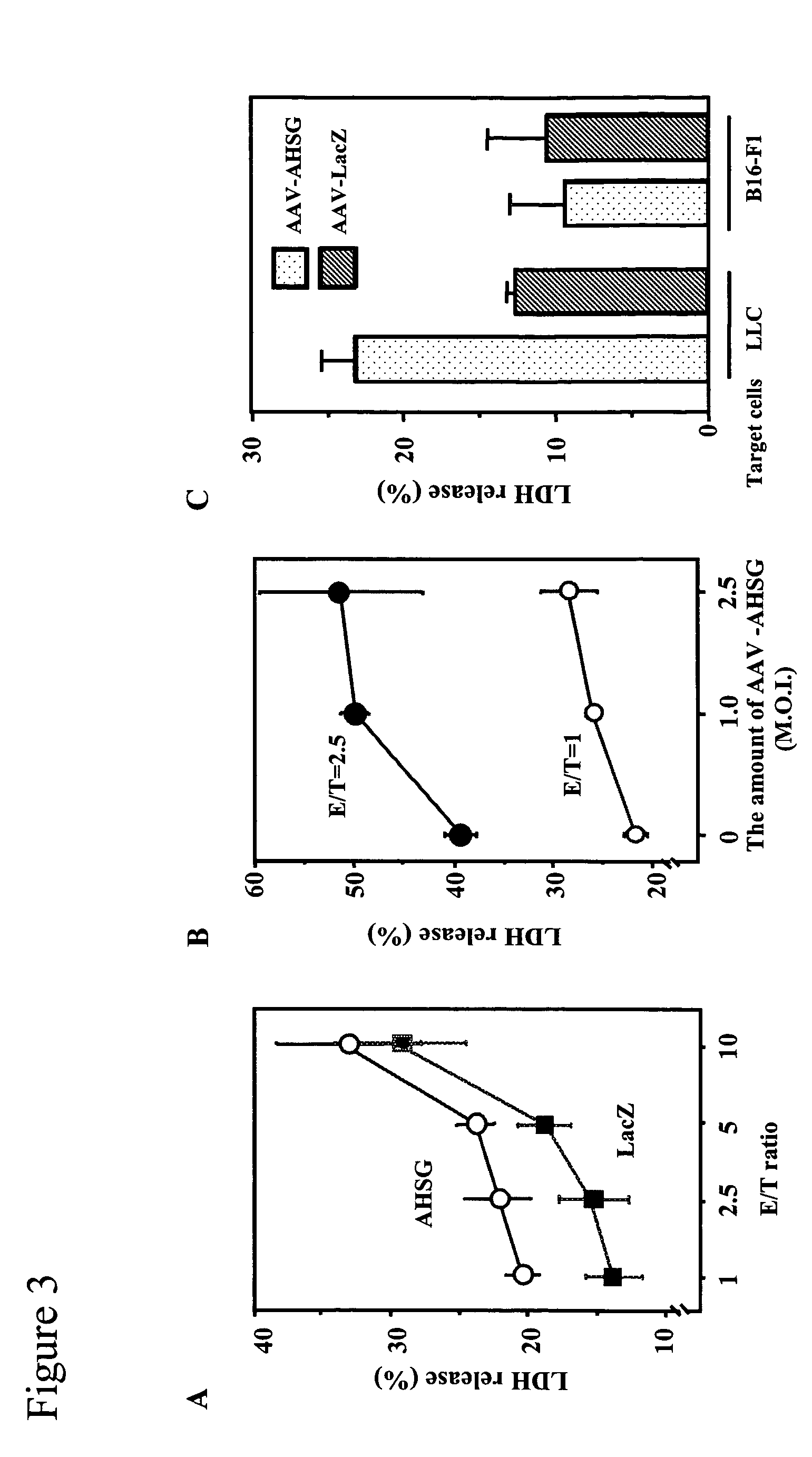Compounds and methods for downregulating the effects of TGF-beta
a technology of tgfbeta and compounds, which is applied in the field of enhancing immunological response to cancer and cellular therapeutic methods for treating cancer, can solve the problems of insufficient levels of ahsg in the blood by itself, and achieve the effect of increasing in vivo and in vitro activity
- Summary
- Abstract
- Description
- Claims
- Application Information
AI Technical Summary
Benefits of technology
Problems solved by technology
Method used
Image
Examples
example 1
[0148] Eye
[0149] The eye may be considered to be a potentially ideal organ for gene therapy approaches for a number of reasons. Numerous diseases of the eye are now well defined at the molecular level, appropriate animal models are often available, eye morphology and function is simple to determine, the immune privileged nature of the eye is advantageous for gene therapy approaches and the second eye can often be used as a control during the development and testing of therapeutic approach in animal models.
[0150] In accordance with the principles and aspects of the present invention there are provided methods to treat disorders of the eye by providing the eye with the ability to downregulate both cathepsin activity and TGF-β receptor binding. This may be achieved, for instance, by providing to the eye, a protein, for example AHSG, having both cathepsin inhibiting activity and TGF-β receptor block the activity. Similarly, peptides and the like which also have the ability to reduce b...
example 2
[0161] Liver
[0162] TGF-β is central to the progression of liver disorders involving inflammation and / or fibrosis and fibrogenesis. Decreasing TGF-β activity and cathepsin activity therefore represents a highly beneficial therapeutic approach. The various agents and methods contemplated by the present invention are useful in the treatment of liver disorders, including toxic, cholestatic, alcoholic (e.g. cirrhosis), inflammatory disorders as well as other types of liver injury such as biliary atresis.
[0163] One embodiment of the present invention comprises providing therapeutic agents of the present invention to the liver in order to reduce the biological activity of TGF-β and cathepsin. Such agents may be advantageously delivered as polypeptides or in nucleic acid form, which may be provided by a viral or non-viral vector and which may be provided directly to the patient or alternatively to other cells which are then provided to the patient. In a preferred embodiment, when the agen...
example 3
[0165] Kidney
[0166] Extracellular matrix accumulation in the glomeruli is common to and the major cause of the pathogenesis of essentially all progressive renal diseases that lead to end-stage renal failure. Currently, no specific and effective therapy is available to treat or prevent the progression of renal fibrosis. TGF-β plays an integral role in the progression of renal fibrotic diseases, for example glomerulonephritis and diabetic nephropathy. While not wishing to be bound by any particular theory, we believe that downregulation of TGF-β receptor binding and cathepsin activity will decrease fibrotic deposition and inhibit the subsequent progression of renal disease.
[0167] A therapeutic treatment embodiment of the present invention comprises providing agents in therapeutic effective amounts to the kidney in order to reduce the activities of TGF-β and cathepsin therein. As with treatment of the liver, such agents may be advantageously delivered as polypeptides or in nucleic ac...
PUM
| Property | Measurement | Unit |
|---|---|---|
| concentration | aaaaa | aaaaa |
| concentration | aaaaa | aaaaa |
| pH | aaaaa | aaaaa |
Abstract
Description
Claims
Application Information
 Login to View More
Login to View More - R&D
- Intellectual Property
- Life Sciences
- Materials
- Tech Scout
- Unparalleled Data Quality
- Higher Quality Content
- 60% Fewer Hallucinations
Browse by: Latest US Patents, China's latest patents, Technical Efficacy Thesaurus, Application Domain, Technology Topic, Popular Technical Reports.
© 2025 PatSnap. All rights reserved.Legal|Privacy policy|Modern Slavery Act Transparency Statement|Sitemap|About US| Contact US: help@patsnap.com



